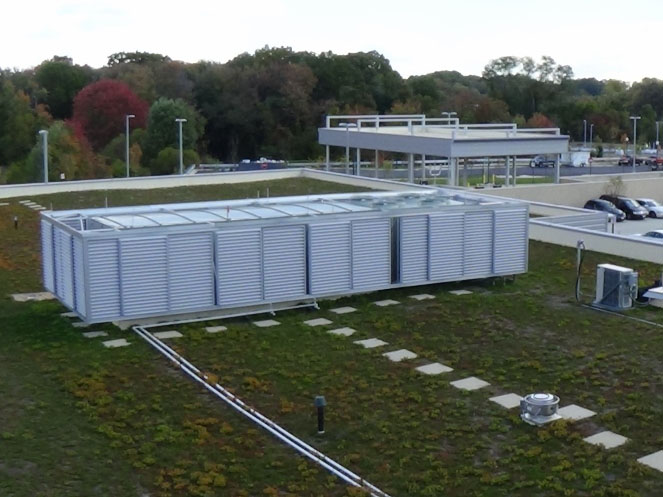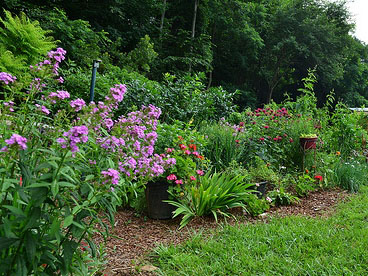Category Name
Water
Media heading
Montgomery County uses water saving fixtures in all County facilities built or renovated since 2008. Rain gardens, green roofs, and other on-site stormwater treatment is implemented on all County facilities built since 2012.
- Goal:
- Maximize water conservation and storm water treatment at County facilities.
- Progress:
- Water saving fixtures are used in all County facilities built or renovated since 2008. Rain gardens, green roofs, and other on-site stormwater treatment is implemented on all County facilities built since 2012.
Water Conservation
The County conducts water use audits and data analysis to identify and prioritize water efficiency improvements at its facilities. Water saving measures include:
- installation of low flow showerheads, sinks, and toilets;
- sub metering showing the amount of water lost to evaporation; and
- educational signage to improve water efficient use at high public use facilities.
As a result of a pilot project in partnership with AQUEES, a local green business start-up, the County retrofitted 90 existing faucets with low flow faucet aerators, reducing annual water use and costs by an estimated $15,000 per year in the Executive Office Building (EOB). Several other County facilities are being evaluated for similar water conservation projects.
Media heading
Montgomery County’s Equipment Maintenance and Transit Operations Center (EMTOC) embodies our goal to maximize water conservation and reuse at County facilities. EMTOC has an impressive water recycling system, in addition to low flow sinks, toilets, showers, and urinals. Water is captured from four acres of green roof, treated, and stored in an underground cistern, then used for washing buses and flushing the toilets and urinals. The system saves more than 30% in water usage over the original equipment maintenance facility. In its first full year of operation, EMTOC’s water and sewer bill was $500,000 less than that of the original facility. More...
Stormwater Management
Montgomery County slows, treats and filters stormwater on site using combinations of rocks, sand, soil, and plants to mimic natural landscapes. Additionally, permeable surfaces in place of hard surfaces allow water to pass through underlying soils, mitigating and controlling stormwater. The County treats all stormwater in new construction according to state and County regulations, capturing 90% of the average rainfall and removing 80% of pollutants. Stormwater treatment structures are also installed on older facilities that were not treated to today’s standards. Stormwater treatments at Montgomery County facilities include more than 1,400 rain gardens, native plant gardens, bioswales, green roofs, and stormwater ponds which treat stormwater and enhance biodiversity.
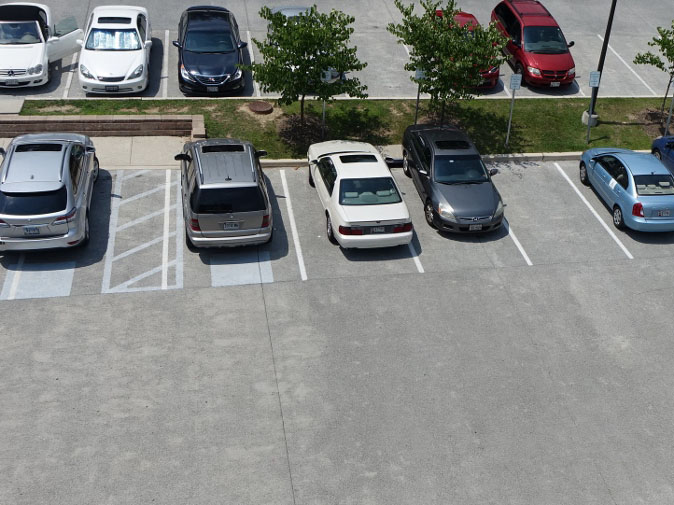
Porous Pavement
Porous pavement allows rain to pass through it and soak into the ground. This replenishes the water table, prevents flooding, and filters pollutants before rain and snow melt reaches our streams and rivers. You can see the porous pavement at the White Oak Recreation Center in action here.
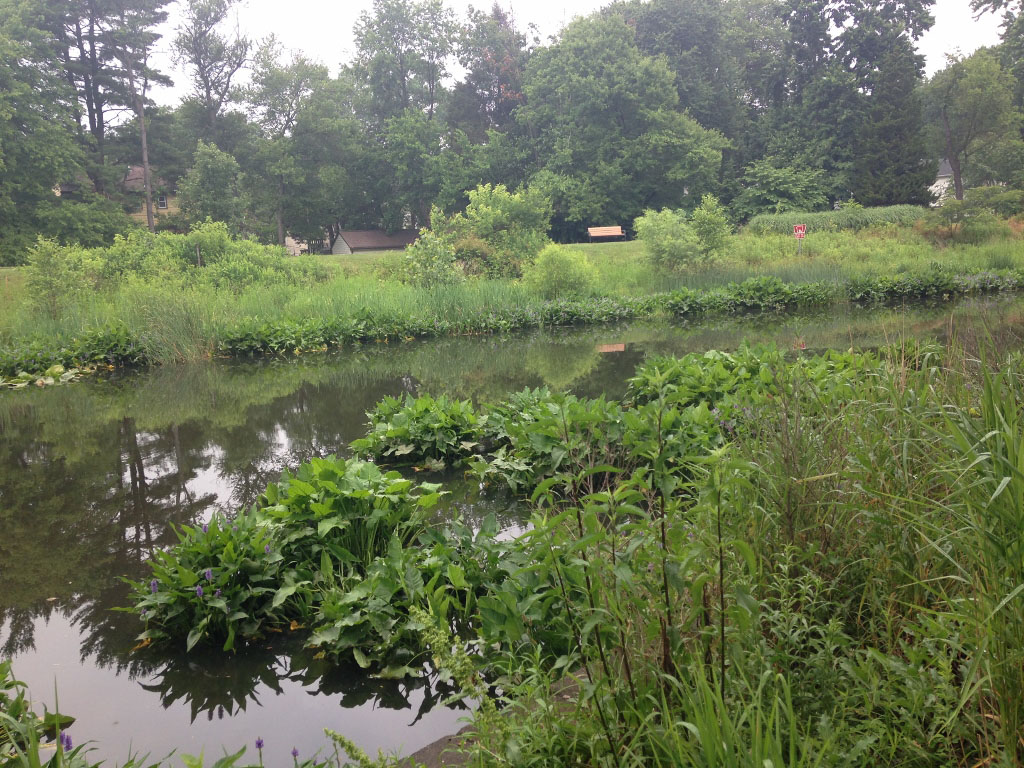
Stormwater Ponds
Stormwater ponds collect rain water that runs over land or into storm drains. This prevents flooding and allows pollutants to settle at the bottom, keeping them out of streams and rivers. These ponds have control structures to release water slowly. Well managed ponds are healthy and support fish, insects, and amphibians that control mosquito populations.
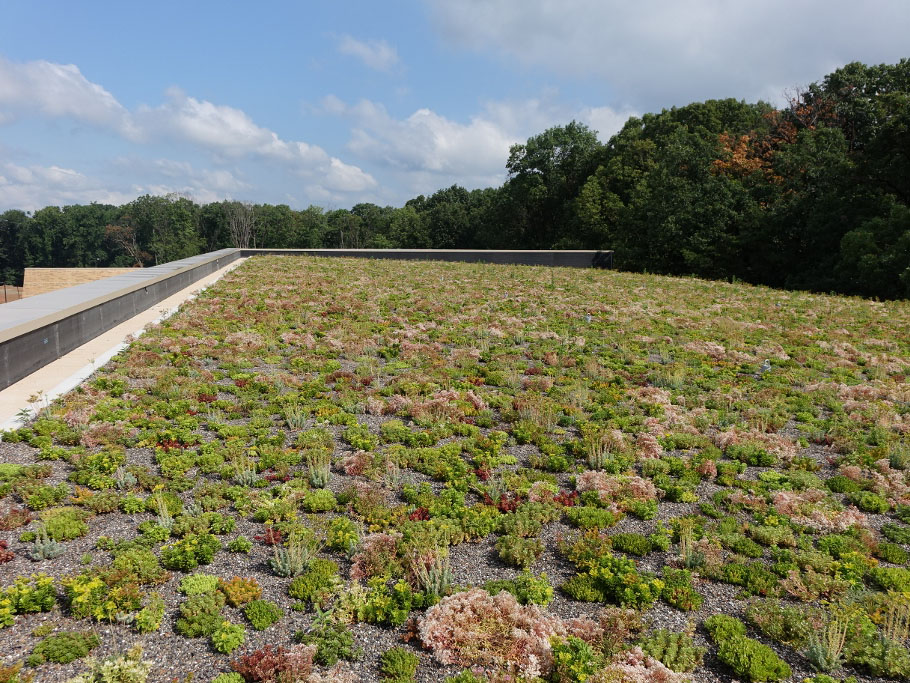
Green Roofs
Green roofs absorb and filter rainwater, keeping streams and rivers clean. They also insulate buildings, save energy, and reduce the heat island effect. Vegetation typically include a root barrier, a drainage layer, 3-4 inches of a soil mixture engineered for water absorption, and low-growing plants that can withstand droughts and heavy rain. More...
Rain Gardens
Rain gardens, also called conservation landscaping, replace grass with native plants that slow and filter rain water and provide habitat for birds and butterflies. Rain gardens are installed by creating a depression, at least two feet deep, to collect water, and replacing existing dirt with stone, sand, and rich soil to filter pollutants. Attractive native flowers, grasses, and bushes top off the rain garden, providing important habitat for birds and butterflies while filtering rain water. Rain gardens are designed to collect water and then drain it within a few hours.
Rain gardens and conservation landscaping replace grass with native plants that slow and filter rain water and provide habitat for birds and butterflies. Rain gardens also replace existing dirt with stone, sand, and rich soil – perfect for filtering pollutants. They typically drain water within a few hours, preventing mosquitoes. Most County facilities use rain gardens to treat water on-site. More...
To learn more about what you can do visit https://mygreenmontgomery.org/projects/water/.


